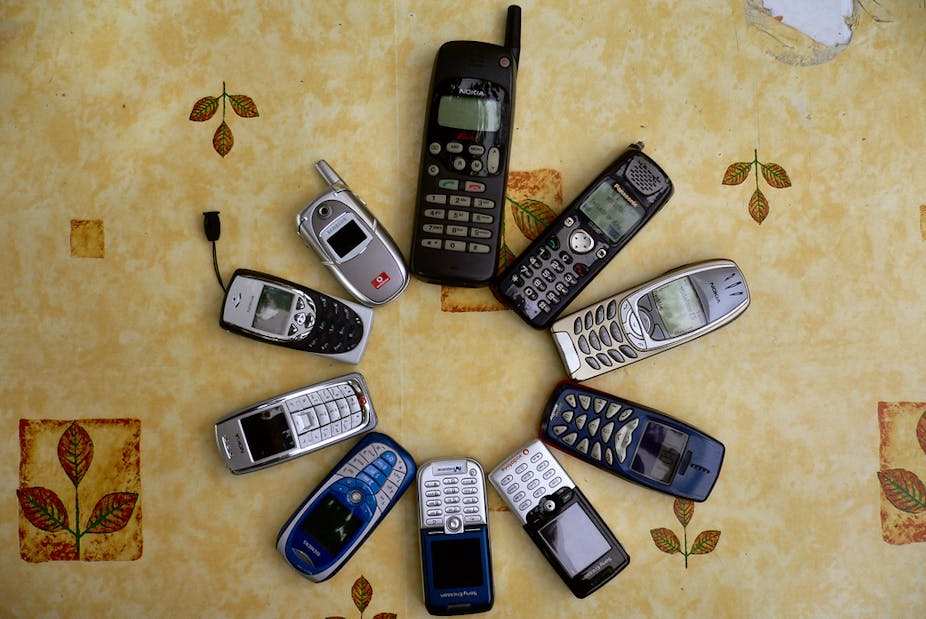Mobile phone users in the UK are just beginning to upgrade to the latest in 4G technology. So it is perhaps surprising to learn that the industry is already working on its successor, 5G. What’s the difference and why do we need to move on from network speeds that are already being heralded as lightning fast?
There is a good reason for the fact that companies are already working behind the scenes on 5G. Developing new technology and all of the associated global standards takes time. Experience tells us that a new generation of mobile phone network is needed roughly every 10 years to match our changing patterns of usage. It might seem like a revelation now, but by the 2020s, we’ll expect even more from our mobiles and 4G will no longer cut the mustard.
On 3 April 1973, when Martin Cooper demonstrated a phone developed by his team at Motorola, it was a simple device for making a call while on the move. Now, the smartphone is a device driven by data and calls have become something of a side event. To fully appreciate the rationale behind the need for 5G, it is useful to reflect on how this evolution unfolded.
From voice-only to data-dominated
The first generation of mobile network that appeared in Europe in the early 1980s used analogue technology and provided a voice-only service for making and receiving telephone calls. That changed in the 1990s as Europe pioneered the move to second-generation digital networks through the creation of the GSM standard. From that point, the mobile began its journey towards becoming a device dominated by data – simply because a digital network allowed it to carry text as well as voice.
The 1990s was the decade in which the internet, and, more specifically, the world wide web, became accessible from our homes. That in turn drove a desire to access the web from our phones, which became possible in a very primitive form with the launch of the Nokia 7110 in 1999.

The thirst for internet access pushed forward the development of second-generation mobile networks that could offer more and more data-handling capacity. Mobile data rates steadily increased from 2G to 2.5G (general packet radio service networks) and then onwards to 2.75G (EDGE) networks.
As data rates increased, the mobile phone morphed into a multimedia-capable device with the addition of features such as a camera, colour screen, more advanced computer functionality and a significantly enhanced web browser. By the mid-2000s, the UK had moved to the third generation of mobile network. The primary aim of 3G was to offer even higher levels of data access, typically approaching two megabits per second, but with the voice service in effect remaining the same as in the 2G networks.
The advent of Apple
In 2007, the world was turned upside down when technology company Apple’s iphone entered the market and completely redefined the smartphone. Apple changed things by envisioning the phone as a computer first and device for making calls second. The creation of the app, coupled with an ever-expanding array of phone functions, has further accelerated our consumption of data services. Social media apps and others such as Google Maps now dominate our usage, and all mobile operators are consequently reporting a significant increase in data traffic on their networks, with volumes doubling year on year.
The launch of 4G in 2012 was the industry’s answer to dealing with this onward and upward trend for data. Today’s 4G (LTE) networks support data services and offer internet access speeds exceeding 50Mbps. With such a leap in data capacity, the next big growth is expected to come from video as the world of catch-up TV and high definition goes mobile. In 4G, voice is simply another data service.
Well connected
The growth in data capacity is expected to continue in the next 10 years, perhaps to reach one thousand times its current level. This would necessitate networks offering rates in gigabits per second.
But capacity won’t be the only issue. It is expected that by 2020 each user will require 10 simultaneous mobile connections because of the proliferation of electronic devices that will pervade everyday, wearable objects. Connecting all of these additional devices to create the so-called Internet of Things will require a new approach to how we allocate and use our limited resource of radio frequencies. Future networks will need to be more efficient in terms of energy consumption and operating cost, and also be more intelligent so that they can automatically adapt to our ever-changing usage.
These are the challenges that 5G must resolve. It may be nothing more than a concept today, but there is no question that the industry has recognised a clear need for a new generation of mobile network. That network must serve our growing needs from 2020, which is why work on 5G has already begun.

